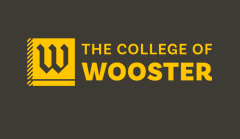Abstract
The purpose of this project is to examine Ed Ruscha and his use of language in his text works. After providing a formal analysis and biographical information, I ask the questions: What are the implications of using words rather than images? How are we to interpret these works? Furthermore, what ought one consider when interpreting a visual work? By combining both art history and philosophy, I plan to create a theory of interpretation that accounts for the visual qualities of the work, the artist and his intention, and the context of the work. I posit that a rich interpretation includes these categories: the visual, the artist’s intention, and the context (biography, art historical, and historical information).
I begin by including a formal analysis of Heavy Industry (1962) and I Think There is Something Dangerous Going on Here (1976) as a way to explicate the works' characteristics before diving into the implications.
Chapter one includes an examination of Ruscha’s biography, starting from early childhood. In this, I look at significant experiences that impacted both his artworks and views on art. I find it necessary to include biographical information as a way to solidify a base before discussing the implications of his artworks.
Chapter two marks a transition from his biography to discussing his art. I identify his reasoning for an interest in both the printed page and books. This helps establish his fondness for words and serves as an explication for this interest. In this chapter I discuss the physicality he gifts to his language.
Chapter three discusses numerous theories of art. I introduce Leo Tolstoy’s transmitter theory of art alongside Noel Carroll’s theory. From this, I compare the two and argue for favoring Carroll’s. In this chapter I investigate the concept and problems of intention, the context, personal attachment to a work, and finally participation. These subsections serve to support my thesis, in that a rich interpretation requires a look at multiple factions, as opposed to a singular category.
Lastly, chapter four includes revisit of Heavy Industry (1962) as a way to boast that interpretation is richer when one deeply interacts with the work. I end by concluding that interpretation is complex. It does not necessitate a singular static meaning, but rather changes and shifts.
Advisor
Rudisill, John
Second Advisor
Siewert, John
Department
Art and Art History; Philosophy
Recommended Citation
Ilersich, Claire E., "Plays with Words: Understanding Visual Interpretation through Ed Ruscha's Text Works" (2017). Senior Independent Study Theses. Paper 7773.
https://openworks.wooster.edu/independentstudy/7773
Keywords
Ed Ruscha, art, art history, philosophy, interpretation, aesthetics
Publication Date
2017
Degree Granted
Bachelor of Arts
Document Type
Senior Independent Study Thesis
© Copyright 2017 Claire E. Ilersich
